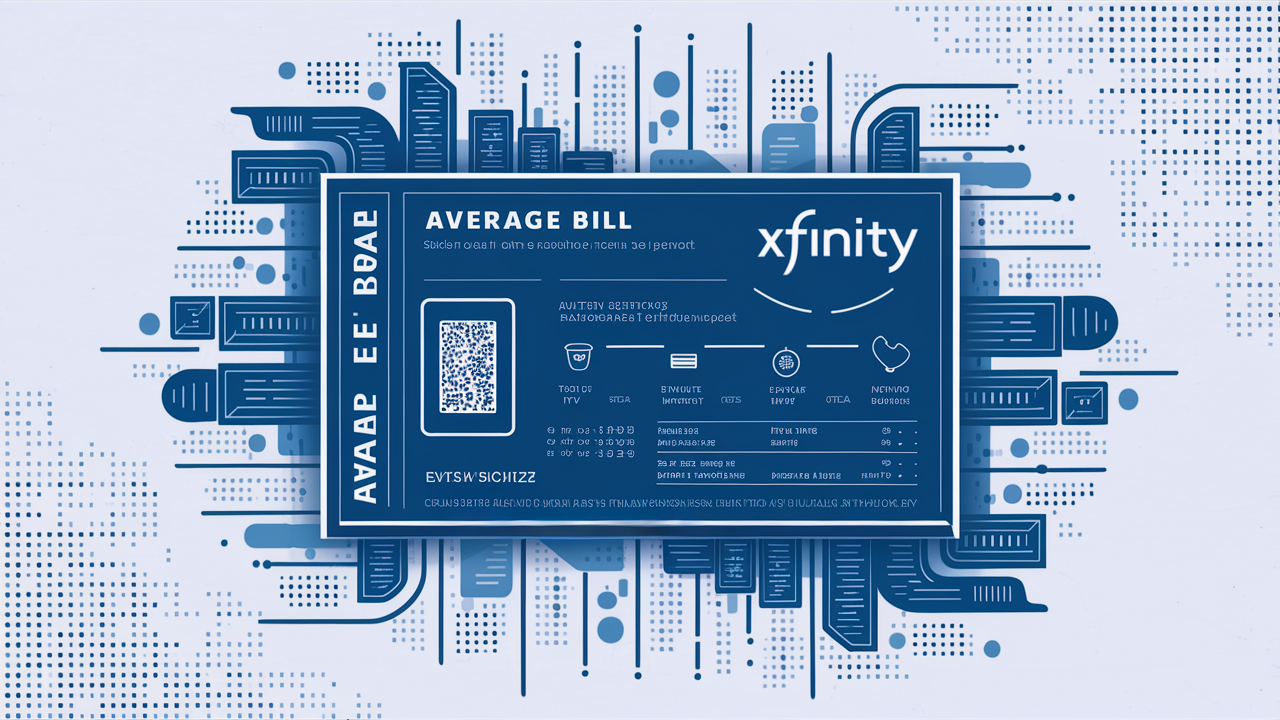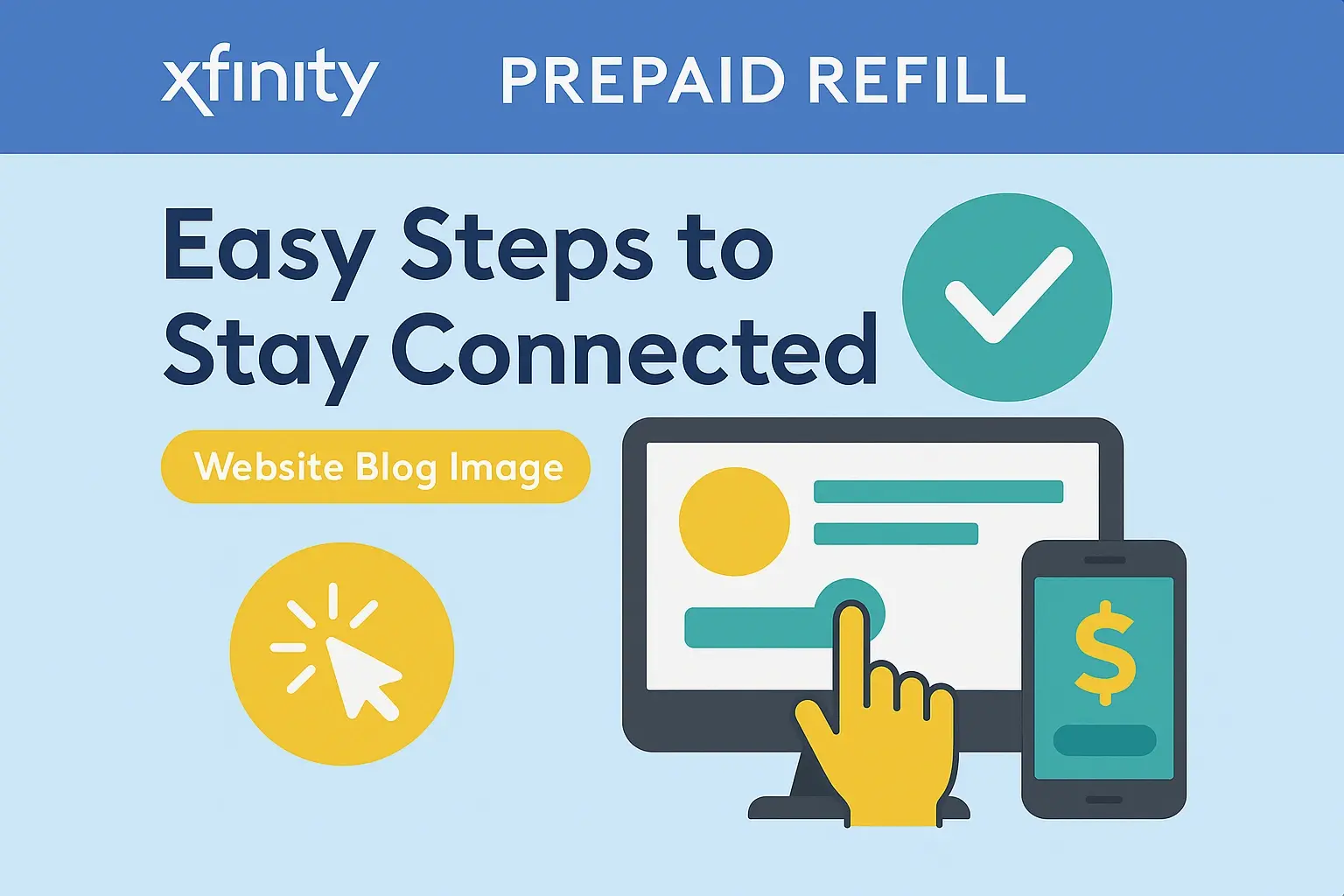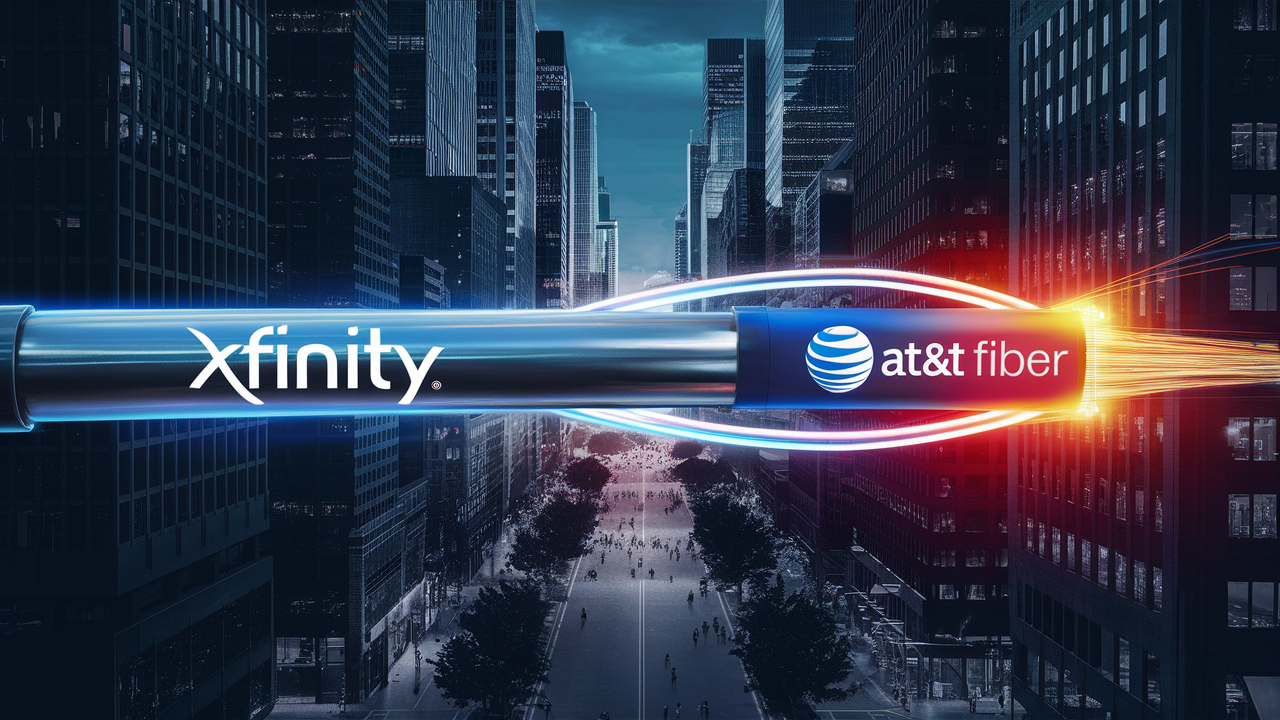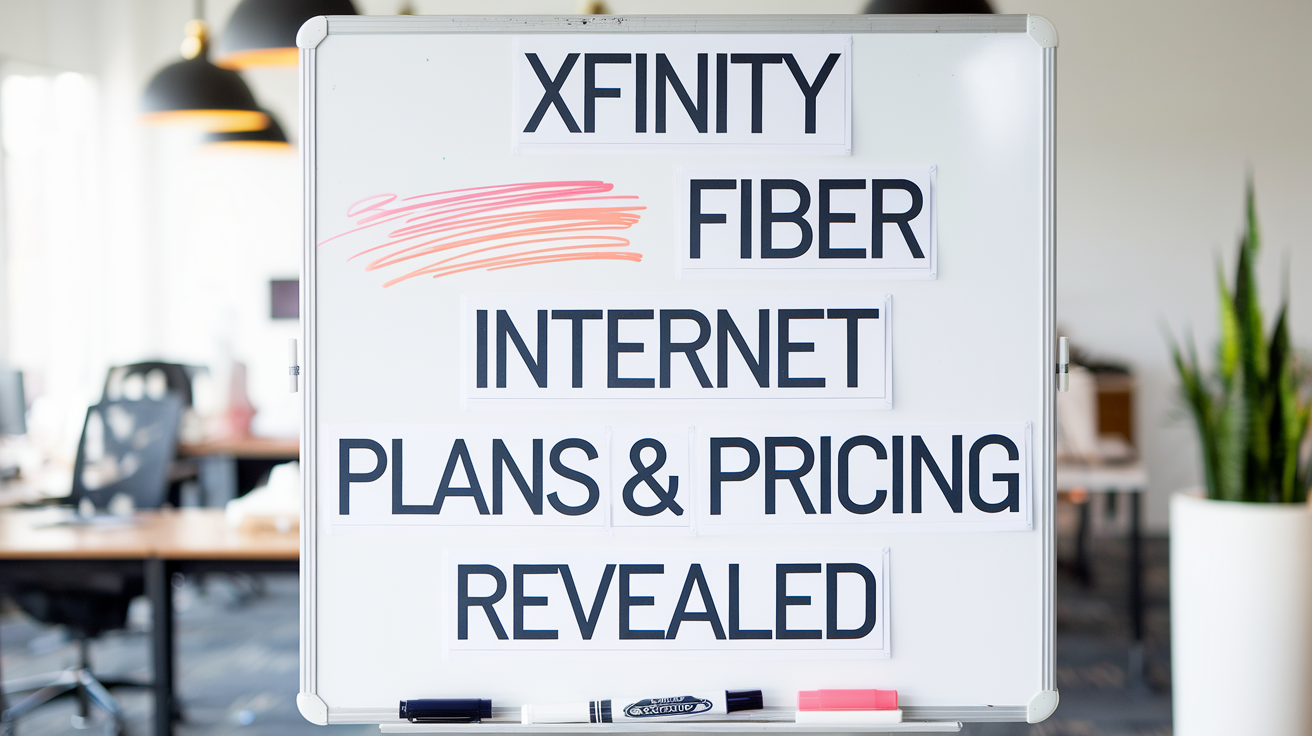What is the average Xfinity bill?

Wondering about your monthly Xfinity expenses? This guide breaks down the average Xfinity bill in 2025, exploring factors influencing costs and how to potentially lower your spending. Get a clear picture of what you can expect.
Understanding Your Xfinity Bill: Key Components
Navigating your Xfinity bill can sometimes feel like deciphering a foreign language. To truly understand what is the average Xfinity bill, it's crucial to first dissect its core components. Each element contributes to the final figure you see each month. These typically include the base price of your chosen services (internet, TV, phone), any add-on features, equipment rental fees, and a variety of regulatory fees, taxes, and surcharges. Understanding each of these will empower you to assess your current spending and identify areas for potential savings. For instance, knowing the exact price of your internet speed tier versus the cost of premium TV channels can help you prioritize your budget. Similarly, recognizing the recurring charge for a modem rental might prompt you to consider purchasing your own compatible device.
Service Charges: The Foundation of Your Bill
The primary driver of your Xfinity bill is the cost of the services you subscribe to. This includes the monthly rate for your internet plan, your chosen TV channel package, and any landline phone service. These base prices are often subject to promotional periods, after which they can increase significantly. It's essential to be aware of when your promotional rate expires to avoid unexpected jumps in your monthly expenditure. Xfinity offers a wide array of internet speeds, from basic browsing capabilities to high-speed tiers designed for heavy streaming and gaming. Similarly, their TV packages range from basic cable to comprehensive bundles with premium channels and sports networks. The more services you bundle, the more complex the service charges become, but it can also lead to overall savings if structured correctly.
Equipment Rental Fees: A Recurring Expense
Another significant component of your Xfinity bill is the rental fee for equipment. This typically includes modems, routers, and cable boxes. While convenient, these monthly rental charges can add up considerably over time. Xfinity often includes these fees in their advertised package prices, but it's important to look for them in the fine print. For example, renting a high-performance Wi-Fi gateway might cost an additional $10-$15 per month. Over a year, this amounts to $120-$180. Many customers find it more cost-effective in the long run to purchase their own compatible modem and router, thereby eliminating these recurring rental fees. However, it's crucial to ensure that any purchased equipment is on Xfinity's approved list to avoid service issues.
Taxes, Fees, and Surcharges: The Unseen Costs
Beyond the base service charges and equipment rentals, your Xfinity bill will include a variety of taxes, regulatory fees, and surcharges imposed by federal, state, and local governments, as well as by Xfinity itself. These can include items like broadcast TV fees, regional sports fees, federal and state universal service fund contributions, and franchise fees. While often small individually, these fees can collectively add a substantial amount to your monthly bill. Understanding these charges is vital, as they are not always negotiable and can fluctuate. Some fees are legitimate costs passed on by regulatory bodies, while others are operational surcharges Xfinity applies.
What is the Average Xfinity Bill in 2025?
Determining a single "average Xfinity bill" is challenging due to the vast array of service plans, bundles, and individual customer choices. However, based on 2025 industry data and consumer reports, the average monthly bill for an Xfinity customer can range significantly. For a customer with a basic internet-only plan, the average might fall between $65 and $90 per month. For those opting for a bundled package that includes internet, TV, and phone services, the average bill can escalate to anywhere from $150 to $250 or even more, depending on the speed of internet, the tier of TV channels, and any premium add-ons like sports packages or movie channels. It's important to remember these are averages, and your personal bill could be higher or lower.
Internet-Only Averages
For individuals or households primarily seeking internet access, the average Xfinity bill in 2025 for an internet-only plan typically ranges from $65 to $90 per month. This figure can vary based on the download and upload speeds offered by the plan. For example, plans offering speeds of 300 Mbps might average around $70-$80, while plans pushing 800 Mbps or Gigabit speeds can easily push the average towards the $90-$100 mark, especially after any initial promotional periods expire. These averages often include the cost of a modem/router rental, which can add approximately $10-$15 to the monthly total.
Bundled Service Averages (Internet, TV, Phone)
When Xfinity services are bundled, the average bill sees a substantial increase. A common bundle including mid-tier internet, a standard TV package, and unlimited local and long-distance phone service can average between $150 and $250 per month in 2025. This average is highly sensitive to the specific choices made. For instance, upgrading to a Gigabit internet speed, selecting a premium TV tier with many sports and entertainment channels, or adding international calling plans will push the bill towards the higher end of this spectrum. Conversely, opting for the most basic internet, a limited channel lineup, and a simple phone plan will keep the average closer to the lower end.
Factors Affecting the Average
Several key factors influence where your bill lands within these averages. The most prominent include:
- Service Tiers: Higher internet speeds and more comprehensive TV channel packages naturally increase costs.
- Promotional Periods: Initial discounts can significantly lower bills for the first 12-24 months, after which standard rates apply.
- Equipment Rental: The cost of renting Xfinity-provided modems, routers, and cable boxes adds to the monthly total.
- Bundling: While bundles can offer savings, the overall cost is higher than a single service.
- Add-ons: Premium channels, DVR services, international calling, and enhanced Wi-Fi features all increase the bill.
- Fees and Taxes: Regulatory fees, broadcast TV fees, and local taxes contribute to the final amount.
Factors That Significantly Influence Your Xfinity Bill
Understanding the average Xfinity bill is only part of the picture. To truly grasp your own expenses, you need to identify the specific factors that drive up or down your monthly charges. These aren't static; they are dynamic elements tied to your service choices, usage patterns, and even your geographical location. By dissecting these influences, you gain the power to make informed decisions about your Xfinity subscription and potentially reduce your overall expenditure. From the speed of your internet connection to the number of premium channels you subscribe to, each decision has a tangible impact on your wallet. Furthermore, the equipment you use and the ever-present fees and taxes play a crucial role.
Internet Speed and Data Tiers
The speed of your internet connection is arguably the most significant factor influencing your Xfinity bill. Xfinity offers a range of internet plans, from basic speeds suitable for light browsing and email to ultra-high-speed plans designed for households with multiple users, heavy streaming, online gaming, and large file downloads. Plans are often categorized by their download speeds, such as 100 Mbps, 300 Mbps, 800 Mbps, and even Gigabit speeds (1000 Mbps or higher). As download speeds increase, so does the monthly cost. For instance, a plan offering 100 Mbps might cost around $60-$70, while a Gigabit plan could be $80-$100 or more, especially after promotional periods. While Xfinity generally offers unlimited data for most of its internet plans, it's always wise to check your specific plan details, as some older or regional plans might have data caps that could lead to overage charges if exceeded.
TV Channel Packages
For Xfinity TV subscribers, the choice of channel package directly impacts the bill. Xfinity offers a tiered structure for its TV services, ranging from basic lineups with essential local channels and a few popular networks to comprehensive packages that include a vast array of entertainment, sports, news, and movie channels. These packages are often named things like "Digital Starter," "Digital Preferred," or "Ultimate TV." A basic package might cost around $40-$60 per month, while a more premium package with channels like HBO, Showtime, ESPN, and NFL Network could add an additional $50-$100 or more to your bill. The inclusion of features like DVR service, On Demand content access, and multi-room viewing also contributes to the overall cost.
Phone Service Options
Xfinity Voice, their home phone service, is typically offered as an add-on or as part of a bundle. The cost can vary depending on the plan. A basic local calling plan might be relatively inexpensive, perhaps $10-$20 per month. However, plans that include unlimited nationwide calling, international calling to specific countries, or enhanced features like voicemail to email can increase this cost significantly. If you rarely use a landline, this might be an area where you can cut costs. However, for many, bundling phone service with internet and TV can sometimes offer a slight discount compared to subscribing to each service individually.
Bundle Deals and Promotions
Xfinity heavily promotes bundle deals, which combine internet, TV, and phone services into a single package. While these bundles can offer a discount compared to subscribing to each service separately, the total cost of a bundle is inherently higher than a single service. The advertised price for bundles often includes significant introductory discounts that are only valid for a limited time, typically 12 to 24 months. After the promotional period ends, the monthly rate can increase substantially. It's crucial to understand the "everyday" price of a bundle, not just the introductory offer, when assessing its long-term value. These bundles are a major driver of higher average bills for many households.
Equipment Choices
As mentioned earlier, equipment rental fees are a recurring expense. Xfinity offers various types of equipment, from basic modems to advanced Wi-Fi gateways that provide enhanced connectivity and features. The cost of renting these devices varies. A standard modem might cost around $10-$12 per month, while a more advanced gateway could be $15-$20 per month. If you have multiple cable boxes for different TVs, each will also incur a rental fee. For customers with multiple devices or who require the latest technology, these rental fees can add up to a significant portion of their monthly bill. As previously noted, purchasing your own compatible equipment can eliminate this cost entirely.
Add-On Services and Premium Channels
Beyond the core services, Xfinity offers numerous add-ons that can inflate your bill. These include premium movie channels like HBO, Cinemax, Showtime, and Starz, which can cost anywhere from $10 to $20 per month each. Sports packages, such as the NFL RedZone or MLB Extra Innings, also come with additional monthly fees. For TV services, features like DVR (Digital Video Recorder) capabilities, particularly advanced DVRs that can record multiple shows simultaneously, incur extra charges. Enhanced Wi-Fi services, like Xfinity's Wi-Fi hotspots or advanced home network security, can also add to the monthly cost. Each of these optional services contributes to a higher overall bill.
Geographic Location
While less common for the base service pricing, your geographic location can sometimes influence the final cost of your Xfinity bill. This is primarily due to varying local taxes, franchise fees, and regulatory surcharges that differ from one municipality or state to another. For example, a customer in a major metropolitan area might pay slightly different fees than someone in a more rural region. These differences are usually minor for the core services but can add up when considering the cumulative effect of all taxes and fees. It's also worth noting that in some areas, Xfinity might face more competition, potentially leading to slightly more competitive pricing, though this is not always the case.
Xfinity Internet Plans and Their Impact on Your Bill
Xfinity's internet service is a cornerstone of their offerings, and the variety of plans available means a wide spectrum of pricing. Understanding these plans is crucial for anyone trying to determine or manage their average Xfinity bill. Each speed tier is designed to cater to different user needs, from basic web browsing to demanding applications like 4K streaming and competitive online gaming. The price directly correlates with the advertised download and upload speeds, with faster plans commanding higher monthly rates. It's also important to consider any data caps, although Xfinity has largely moved towards unlimited data for most of its plans, and the cost of equipment rental, which is often bundled into the advertised price.
Internet Speed Tiers and Costs (2025)
Here's a look at typical Xfinity internet plans and their estimated monthly costs in 2025, excluding initial promotional discounts. These prices are approximate and can vary by region and specific package details:
| Plan Name (Example) | Download Speed (Up to) | Upload Speed (Up to) | Estimated Monthly Cost (2025, Post-Promo) | Ideal For |
|---|---|---|---|---|
| Connect | 100 Mbps | 10 Mbps | $65 - $75 | Basic browsing, email, social media, light streaming |
| Connect More | 200 Mbps | 10 Mbps | $70 - $80 | Multiple users, HD streaming, online gaming |
| Fast | 300 Mbps | 10 Mbps | $75 - $85 | Heavy streaming, multiple devices, moderate gaming |
| Superfast | 500 Mbps | 20 Mbps | $80 - $90 | 4K streaming, large downloads, advanced gaming, smart homes |
| Gigabit | 1000 Mbps (1 Gbps) | 20 Mbps | $85 - $100 | Extremely demanding use, multiple 4K streams, professional use |
| Gigabit Extra | 1200 Mbps (1.2 Gbps) | 35 Mbps | $95 - $110 | Power users, simultaneous high-bandwidth activities |
Note: These prices often include modem rental fees. Actual prices may vary by location and current promotions.
Understanding Upload Speeds
While download speeds are what most consumers focus on, upload speeds are increasingly important for activities like video conferencing, live streaming, uploading large files, and online gaming. Xfinity's plans often have significantly lower upload speeds compared to download speeds. For instance, a Gigabit plan might offer 1000 Mbps download but only 20-35 Mbps upload. If your online activities heavily rely on uploading content, you might need to look for plans with higher upload capabilities or consider services from providers that offer symmetrical (equal download and upload) speeds, if available in your area.
Data Usage Policies
In most of Xfinity's service areas, internet plans come with unlimited data. This means you don't have to worry about exceeding a data cap and incurring overage charges. However, it's always prudent to verify the data policy for your specific plan and location. In some regions, Xfinity might still have data caps, or they may offer a "flex" plan with a data cap that is cheaper. If a data cap is in place, exceeding it can result in hefty fees, typically $10 for every 50 GB over the limit, up to a maximum monthly charge. Understanding your data allowance is crucial for avoiding unexpected costs.
Equipment Rental Impact on Internet Bills
As detailed previously, the monthly rental fee for Xfinity's modem and router (often combined into a gateway device) can add approximately $10-$15 to your internet bill. For example, a $75 internet plan could effectively cost $85-$90 once the equipment rental is factored in. Over a year, this amounts to $120-$180 in rental fees alone. Many customers find it more economical to purchase their own compatible modem and router. A good quality modem can cost between $70-$150, and a router between $50-$200, offering a payback period of less than a year in many cases. Ensure any purchased equipment is on Xfinity's approved device list.
Promotional Pricing and After-Promo Rates
Xfinity heavily relies on promotional pricing to attract new customers. These discounts can significantly reduce the monthly bill for the first 12 to 24 months. For example, a Gigabit plan that regularly costs $90-$100 might be advertised at $60-$70 for the first year. It is absolutely critical to know when your promotional period ends. Once it expires, the price will revert to the standard rate, which can be substantially higher. Always ask for the "everyday" or "standard" price of a plan, not just the promotional rate, to accurately forecast your long-term expenses.
Xfinity TV Packages: Understanding the Costs
Xfinity's television service offers a wide range of packages, from basic channels to comprehensive bundles packed with premium content. The cost of your TV service is a significant contributor to your overall Xfinity bill. Understanding the different tiers, the channels included, and the associated fees is essential for managing your expenses. The pricing is influenced by the number and type of channels, the inclusion of features like DVR, and any premium add-ons you select. As with internet, promotional pricing is common, but standard rates apply after the introductory period.
TV Package Tiers and Features (2025)
Xfinity TV packages are structured in tiers, with each successive tier offering more channels and features. Here's a general overview of common packages and their estimated monthly costs in 2025 (excluding any bundled discounts or premium add-ons):
| Package Name (Example) | Key Features | Estimated Monthly Cost (2025, Post-Promo) | Target Audience |
|---|---|---|---|
| Digital Starter | Local channels, popular cable networks (e.g., CNN, ESPN, HGTV), limited On Demand | $40 - $60 | Basic TV viewers, budget-conscious |
| Digital Preferred | All Digital Starter channels plus more entertainment, sports, and news networks | $60 - $80 | General viewers wanting a wider selection |
| Premium TV | All Digital Preferred channels plus premium movie channels (e.g., HBO, Cinemax) | $80 - $100+ | Movie buffs, those wanting premium content |
| Ultimate TV | Most comprehensive package, including premium channels, sports networks, and expanded On Demand | $90 - $120+ | Avid TV watchers, sports fans, those wanting the full experience |
Note: These prices are estimates and can vary significantly by region and promotional offers.
Premium Channel Add-Ons
If a standard package doesn't include your desired premium channels, Xfinity offers them as individual add-ons or in themed packages. For example:
- HBO Max: Approximately $15 - $18 per month
- Showtime: Approximately $10 - $13 per month
- Cinemax: Approximately $10 - $13 per month
- Starz: Approximately $9 - $12 per month
- Sports Entertainment Package: May include channels like NFL RedZone, Outdoor Channel, etc., for an additional $10 - $20 per month.
These individual costs can quickly add up, significantly increasing your monthly TV bill. It's often more cost-effective to select a higher-tier package that includes these channels if you plan to subscribe to multiple premium networks.
DVR and Equipment Fees
Xfinity's TV service also involves equipment rental fees for cable boxes and DVRs. A standard digital adapter or basic cable box might cost around $5-$10 per month. A DVR service, which allows you to record programs, typically costs an additional $10-$15 per month, often depending on the storage capacity and number of tuners. If you have multiple TVs in your home, you will likely need a cable box or adapter for each, and each will incur a rental fee. This can add another $15-$30 or more to your monthly bill if you have several TVs.
Broadcast and Regional Sports Fees
A common and often frustrating addition to Xfinity TV bills are "Broadcast TV Fees" and "Regional Sports Fees." These are surcharges Xfinity applies to help offset the costs of carrying local broadcast channels and regional sports networks. The Broadcast TV Fee is typically in the range of $10-$15 per month, and the Regional Sports Fee can range from $5-$15 or more, depending on the number of regional sports networks available in your area. These fees are not negotiable and are subject to change.
On Demand and Pay-Per-View
While Xfinity offers a vast library of On Demand content, some movies or events may be available for rent or purchase through Pay-Per-View. These are typically one-time charges that will appear on your bill. While not a recurring cost, frequent use of Pay-Per-View can add up. It's always a good idea to check the price before confirming a Pay-Per-View order to avoid unexpected charges.
Xfinity Voice (Phone) Services and Bundling Benefits
Xfinity Voice is Xfinity's digital home phone service. While landline usage has declined, many households still find value in a reliable home phone, especially when bundled with other Xfinity services. The cost of Xfinity Voice is generally lower than traditional phone companies and can offer additional benefits when combined with internet and TV packages. Understanding the pricing structure and the advantages of bundling can help you make an informed decision about whether to include it in your Xfinity subscription.
Xfinity Voice Plans and Pricing (2025)
Xfinity Voice plans are typically structured to offer varying levels of calling features. The most common plan includes unlimited local and nationwide calling. Some plans may also include unlimited calling to Canada and Mexico, or even international calling to numerous countries. Here's a general idea of pricing:
- Unlimited Voice (Nationwide): This plan, which includes unlimited local and nationwide calling, often costs between $15 and $30 per month.
- International Calling Add-ons: For customers who frequently call abroad, Xfinity offers various international calling packages. For example, a package covering calls to over 60 countries might add $10-$20 per month, while a more extensive plan could be $20-$30 or more.
It's important to note that these prices are often part of a bundle. If you were to subscribe to Xfinity Voice as a standalone service, the cost would likely be higher.
Bundling Benefits and Discounts
The primary advantage of adding Xfinity Voice to your bundle is the potential for savings. Xfinity often provides discounts when you combine internet, TV, and phone services. For instance, a bundle might offer a lower combined price than if you were to subscribe to each service individually. This can make it an attractive option, even if you only use your landline occasionally. The perceived value of bundling is that you consolidate your bills and potentially receive a more attractive overall monthly rate. Always compare the cost of a bundle against the cost of individual services to ensure you are actually saving money.
Features and Value of Xfinity Voice
Beyond just calling, Xfinity Voice often includes features that enhance its value:
- Voicemail: Standard voicemail service.
- Caller ID: Displays the incoming caller's number.
- Call Waiting: Alerts you to an incoming call while you're already on a call.
- Call Forwarding: Allows you to forward calls to another number.
- Voicemail to Email/Text: Some plans offer the ability to receive voicemail messages as audio files via email or text alerts.
- 911 Service: Enhanced 911 service that can provide your location to emergency responders.
For many, the convenience of having these features integrated with their Xfinity services, coupled with potentially lower costs through bundling, makes Xfinity Voice a worthwhile addition. However, if you primarily rely on mobile phones for all your communication, the added cost might not be justified.
Equipment for Phone Service
Xfinity Voice typically uses the same modem or gateway device that provides your internet service. There is usually no separate phone equipment rental fee associated with Xfinity Voice itself, as it leverages your existing internet connection. This is another advantage compared to traditional landline services that might require separate wiring and equipment. You simply plug your standard analog phone into the modem/gateway device.
The Hidden Costs: Equipment Rental Fees
Equipment rental fees are a significant, and often underestimated, component of an Xfinity bill. These recurring monthly charges can add up substantially over the lifespan of your service, making it crucial to understand their impact. Xfinity provides essential equipment like modems, routers, and cable boxes, and charges a monthly fee for each. While convenient, especially for initial setup, these fees can become a considerable expense, often amounting to hundreds of dollars per year. For many customers, purchasing their own compatible equipment can lead to long-term savings, effectively eliminating these rental costs.
Modem and Router Rental Costs
Xfinity offers various modem and router combinations, often referred to as gateways. These devices are essential for providing internet connectivity. The rental fees vary depending on the model and its capabilities:
- Standard Modem/Gateway: Typically costs between $10 and $15 per month. These devices provide basic internet and Wi-Fi functionality.
- Advanced Wi-Fi Gateway: These higher-end models offer enhanced Wi-Fi performance, greater range, and more advanced features. They can cost between $15 and $25 per month.
Consider a standard gateway rental of $12 per month. Over a year, this amounts to $144. Over three years, it's $432. This highlights the potential savings from purchasing your own equipment.
Cable Box and DVR Rental Costs
If you subscribe to Xfinity TV service, you will likely need cable boxes for each television. These also come with monthly rental fees:
- Digital Adapter/Basic Cable Box: Often costs around $5 to $10 per month. This is for a single TV.
- X1 DVR Box: For customers who want to record TV programs, DVR boxes are necessary. These are typically more expensive, ranging from $10 to $15 per month. Some advanced DVRs with more tuners or storage might cost more.
If a household has three TVs, each requiring a basic box, this could add $15-$30 per month. If one of those TVs has a DVR, the cost could jump to $25-$40 per month for equipment alone.
The Case for Purchasing Your Own Equipment
The primary incentive to buy your own modem and router is to eliminate recurring rental fees. For example, if your monthly rental fee is $15, and you purchase a compatible modem/router for $150, you'll recoup your investment in just 10 months. After that, you continue to use the equipment without any further rental charges. This can lead to significant savings over the years. However, it's crucial to:
- Check Compatibility: Ensure the equipment you purchase is on Xfinity's approved device list. Using incompatible equipment can lead to service issues or even denial of service.
- Understand Warranty and Support: When you own your equipment, you are responsible for its warranty and technical support. Xfinity will not provide support for customer-owned devices beyond basic connectivity checks.
- Consider Future Upgrades: Technology evolves. You might need to upgrade your purchased equipment every few years to keep up with faster internet speeds or new Wi-Fi standards.
For cable boxes, purchasing your own is generally not an option or is significantly more complex and less cost-effective than renting, as these are often proprietary Xfinity devices.
Impact on Total Bill
When calculating the average Xfinity bill, it's essential to factor in these equipment rental costs. A seemingly affordable internet plan of $70 per month could effectively be $85 per month once a $15 gateway rental fee is included. Similarly, a TV package might appear to be $60, but with two cable boxes at $8 each, the total service cost rises to $76. These fees, while sometimes overlooked, contribute significantly to the overall monthly expenditure and are a prime area for potential savings.
Decoding the Fine Print: Fees, Taxes, and Surcharges
Beyond the advertised prices for services and equipment, Xfinity bills are often padded with a variety of fees, taxes, and surcharges. These can be confusing and often lead to sticker shock when customers see their final bill. Understanding these charges is crucial for accurately assessing your total monthly cost and identifying any potential discrepancies. These fees are levied by various entities, including federal, state, and local governments, as well as by Xfinity itself to cover operational costs and regulatory requirements.
Common Fees and Surcharges
Here are some of the most common fees and surcharges you might find on your Xfinity bill:
- Broadcast TV Fee: This fee is Xfinity's way of recouping the costs associated with carrying local broadcast channels. It can range from $10 to $15 per month.
- Regional Sports Fee: This fee helps cover the costs of carrying regional sports networks. Its amount varies significantly by location but can range from $5 to $15 per month or more.
- Xfinity Internet Equipment Fee: This is the rental fee for your modem/router, as discussed previously.
- Xfinity TV Equipment Fee: Rental fees for cable boxes and DVRs.
- State and Local Sales Taxes: Applicable sales taxes on services and equipment, varying by jurisdiction.
- Franchise Fees: Fees paid to local municipalities for the right to use public rights-of-way to provide cable and internet services. These can vary significantly by city and county.
- Federal Universal Service Fund (USF) Surcharge: A federally mandated fee to support telecommunications services in rural and high-cost areas, schools, and libraries.
- Telecommunications Relay Services (TRS) Surcharge: A federal surcharge to support services for individuals with hearing or speech disabilities.
- Other Regulatory Fees: Various other small fees related to federal, state, or local regulations.
Understanding Their Purpose
While some of these fees are legitimate costs passed on from government mandates or regulatory bodies (like the USF or TRS surcharges), others are operational surcharges implemented by Xfinity. For example, the Broadcast TV Fee and Regional Sports Fee are Xfinity's way of passing on the increasing costs of content acquisition to the consumer. Franchise fees are payments to local governments for infrastructure access. It's important to note that these fees are generally not negotiable and are subject to change.
How to Identify and Track Fees
Your Xfinity bill should itemize these fees. They are typically found in a section separate from the base service charges. When reviewing your bill, pay close attention to the "Fees and Taxes" or "Regulatory Fees and Other Charges" sections. Keep track of these fees month-over-month, as increases can sometimes indicate a change in Xfinity's pricing structure or a change in local regulations.
Impact on the Average Bill
Collectively, these fees, taxes, and surcharges can add a significant amount to your monthly bill. For a bundled service, it's not uncommon for these charges to add an extra $20 to $40 or more to the advertised price of the services. This is a crucial reason why the actual amount you pay can be considerably higher than the initial promotional price you see advertised. For instance, a $100 bundle might realistically cost $120-$140 after all applicable fees and taxes are applied.
Negotiating Fees
While most of these fees are non-negotiable, there are limited circumstances where you might be able to get certain charges adjusted. For example, if you are experiencing service issues and are a long-time customer, a customer service representative might offer a credit that effectively offsets some of these fees for a billing cycle. However, it's generally not possible to eliminate regulatory fees or franchise fees. The best approach is to understand them and factor them into your budget.
Strategies to Lower Your Average Xfinity Bill
Now that we've thoroughly explored what constitutes an Xfinity bill and the factors influencing its cost, the crucial question becomes: how can you reduce it? Fortunately, there are several actionable strategies you can employ to lower your average monthly Xfinity bill without necessarily sacrificing essential services. These methods range from simple plan adjustments to more involved equipment decisions and proactive customer service engagement. By implementing these tips, you can gain more control over your telecommunications expenses and potentially save a significant amount of money over time.
Review and Adjust Your Current Plan
The most direct way to lower your bill is to re-evaluate your current service plan. Are you paying for internet speeds you don't use? Do you have premium TV channels that you rarely watch? Take stock of your actual usage. Many customers are subscribed to higher tiers than they need. Contact Xfinity and ask about lower-tier plans that would still meet your needs. For example, if you have Gigabit internet but only use it for basic browsing and streaming, downgrading to a 300 Mbps or 500 Mbps plan could save you $10-$20 per month. Similarly, if you only watch a handful of channels, a more basic TV package might suffice.
Consider Purchasing Your Own Equipment
As extensively discussed, equipment rental fees are a significant recurring cost. If you are renting an Xfinity modem/router, investigate purchasing your own compatible device. A one-time investment can eliminate monthly rental fees of $10-$25, leading to substantial savings over the long term. Ensure the equipment you buy is on Xfinity's approved device list to avoid compatibility issues. This is often one of the most effective ways to reduce your monthly bill without changing your service level.
Negotiate with Xfinity Customer Service
Don't be afraid to call Xfinity customer service and ask for a better deal. Many customers find success by leveraging competitor offers or by simply inquiring about available promotions. Politely explain that you are considering switching providers due to cost and ask if there are any current discounts or retention offers available. Mentioning that your promotional period is ending or has ended can also be a good starting point for negotiation. Be prepared to speak with retention specialists who are empowered to offer deals to keep customers.
Bundle Strategically or Unbundle
Bundling services can offer savings, but only if you use all the services included. If you have Xfinity Voice but primarily use your mobile phone, consider unbundling the phone service. Conversely, if you have separate internet and TV services from different providers, exploring an Xfinity bundle might be more cost-effective, provided the combined price is lower than your current individual costs. Always compare the total cost of bundled services versus individual services.
Look for Promotional Offers and Switch Providers Periodically
Xfinity frequently offers new customer promotions. While you might not be a new customer, you can sometimes take advantage of these by switching to a different Xfinity plan or by temporarily pausing and re-signing up (though this can be complex). More effectively, consider switching to a competitor if they offer a significantly better deal. Once your contract with a competitor ends, you can always switch back to Xfinity and potentially get new customer pricing again. This "provider hopping" can be a reliable way to secure lower rates, though it requires some effort.
Reduce Premium Channels and Add-Ons
Go through your TV package and identify any premium channels (like HBO, Showtime) or sports packages that you don't actively use. Removing these can immediately lower your monthly bill. Similarly, review any other add-on services like enhanced Wi-Fi or extra DVR features. If you don't critically need them, dropping them can contribute to savings.
Take Advantage of Internet Essentials or Low-Income Programs
Xfinity offers a program called "Internet Essentials" (or similar low-income internet programs) for qualifying households. If your income meets certain criteria, you may be eligible for significantly discounted internet service. This program is designed to make broadband more accessible. Check Xfinity's website or contact them directly to see if you qualify for such programs in your area.
Monitor Your Bill for Errors
Mistakes happen. Regularly review your Xfinity bill for any unexpected charges, incorrect fees, or services you didn't authorize. If you find an error, contact customer service immediately to have it corrected. Over time, even small billing errors can add up.
Comparing Xfinity Bills to Competitors
Understanding the average Xfinity bill is one thing, but putting it into perspective requires comparing it to what competitors might charge for similar services. The competitive landscape for internet, TV, and phone services varies significantly by region. In some areas, Xfinity faces stiff competition from other cable providers, fiber optic companies, and even satellite or 5G home internet providers. In other areas, Xfinity might be the primary or only high-speed internet option. This competitive pressure directly influences pricing and the types of deals offered.
Fiber Optic Internet Providers
Companies like AT&T Fiber, Verizon Fios, and Google Fiber offer fiber optic internet, which is often lauded for its speed and reliability, including symmetrical upload and download speeds. In areas where fiber is available, Xfinity often has to compete more aggressively on price and speed. For example, a 1 Gbps fiber plan might be priced similarly to or even lower than Xfinity's Gigabit plan, often with higher upload speeds and no data caps or equipment rental fees. However, fiber availability is still limited compared to cable internet.
Example Comparison (1 Gbps Service):
- Xfinity Gigabit: ~$85-$100/month (post-promo, often with modem rental, lower upload speeds)
- Fiber Provider (e.g., AT&T Fiber): ~$70-$90/month (post-promo, symmetrical speeds, often no equipment rental)
Other Cable Providers
In markets where Xfinity competes directly with other cable companies (e.g., Spectrum, Cox), pricing can be quite similar. These providers often offer comparable packages for internet, TV, and phone services. The key differences often lie in specific channel lineups, internet speed tiers, and promotional offers. When comparing, it's crucial to look at the "apples-to-apples" value: speed, data caps, channel selection, equipment costs, and contract terms.
5G Home Internet and Satellite Internet
Emerging technologies like 5G home internet (offered by T-Mobile, Verizon) and satellite internet (e.g., Starlink, HughesNet) present alternatives, particularly in areas where traditional broadband is scarce or expensive. 5G home internet can offer competitive pricing and decent speeds, often with unlimited data, but availability is growing. Satellite internet, while widely available, typically has higher latency, lower speeds, and often strict data caps, making it a less direct competitor for most Xfinity customers seeking high-performance internet.
Example Comparison (Basic Internet/Moderate Speeds):
- Xfinity Connect More (200 Mbps): ~$70-$80/month (post-promo, modem rental)
- 5G Home Internet: ~$50-$75/month (flat rate, unlimited data, speeds vary)
- Satellite Internet: ~$60-$100+/month (often with data caps, higher latency)
Contract Terms and Promotional Periods
A significant difference between providers can be their contract requirements and the duration of promotional pricing. Xfinity often uses 12- or 24-month contracts with significant introductory discounts. Competitors may offer similar structures or, in some cases, no-contract options with slightly higher standard rates. Understanding these terms is vital, as breaking a contract can incur hefty early termination fees. The cyclical nature of switching providers to capture new customer deals is a common strategy for cost-conscious consumers.
Overall Value Proposition
When comparing, it's not just about the monthly price. Consider the overall value: the speed and reliability of the service, the breadth of TV channels, the features of the phone service, the cost of equipment, data caps, contract obligations, and customer service reputation. Xfinity's strength often lies in its extensive network coverage and the availability of high-speed internet in many areas. However, competitors, particularly fiber providers, can offer superior performance in terms of upload speeds and consistency. The "best" provider and pricing depend heavily on your specific location and individual needs.
Conclusion: Mastering Your Xfinity Expenses
The question, "What is the average Xfinity bill?" reveals a complex landscape with figures varying widely from around $65 for basic internet to well over $250 for comprehensive bundles in 2025. Understanding your own bill requires dissecting service charges, equipment rentals, and the myriad of fees and taxes. Factors like internet speed, TV package tiers, and promotional pricing play pivotal roles in shaping your monthly expenditure. By strategically reviewing your plan, considering purchasing your own equipment, and actively negotiating with customer service, you can significantly lower your average Xfinity bill. Regularly comparing your plan to competitor offerings and taking advantage of available programs, like low-income internet subsidies, are also effective cost-saving measures. Mastering your Xfinity expenses is achievable through informed choices and proactive management.





